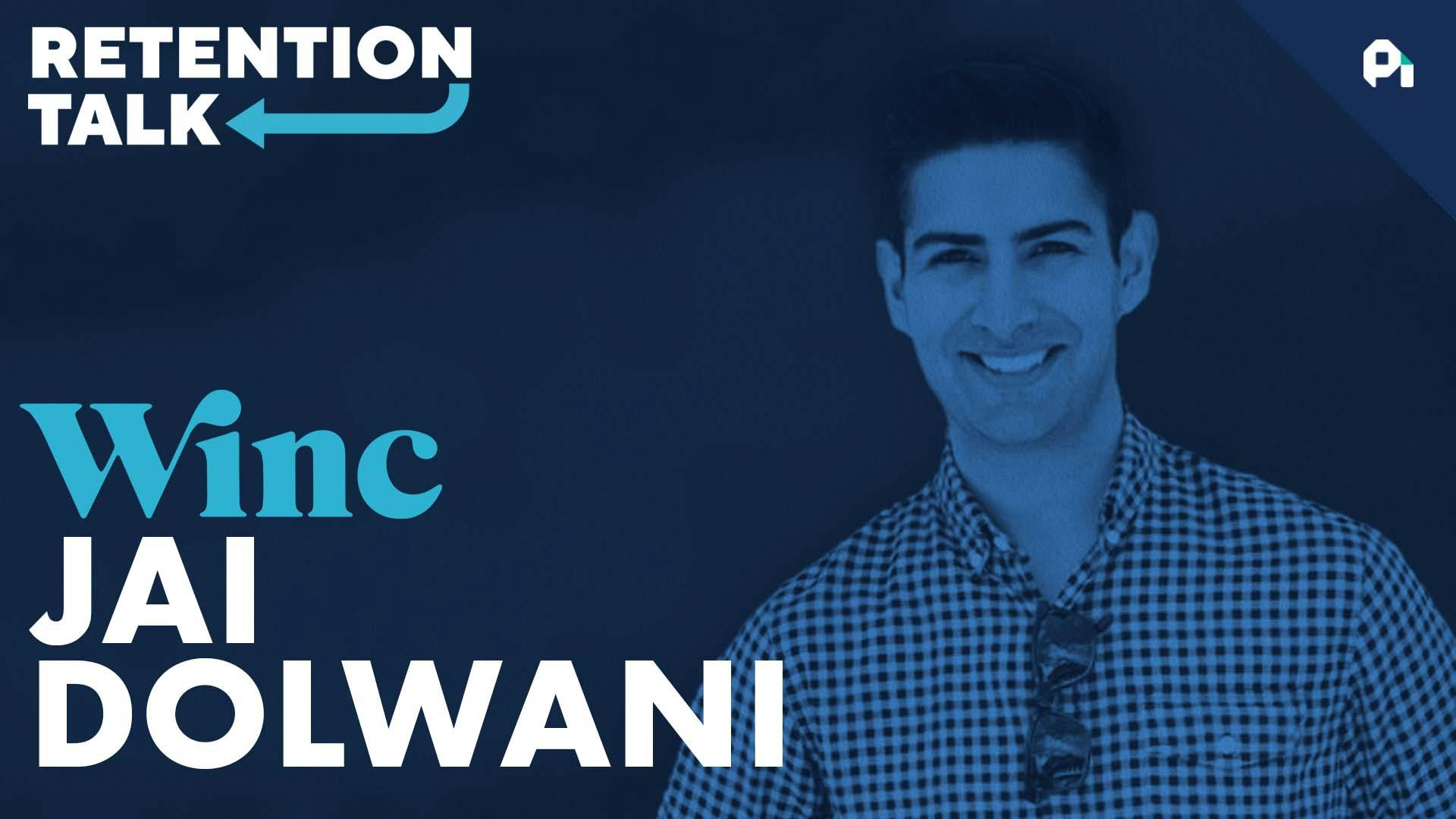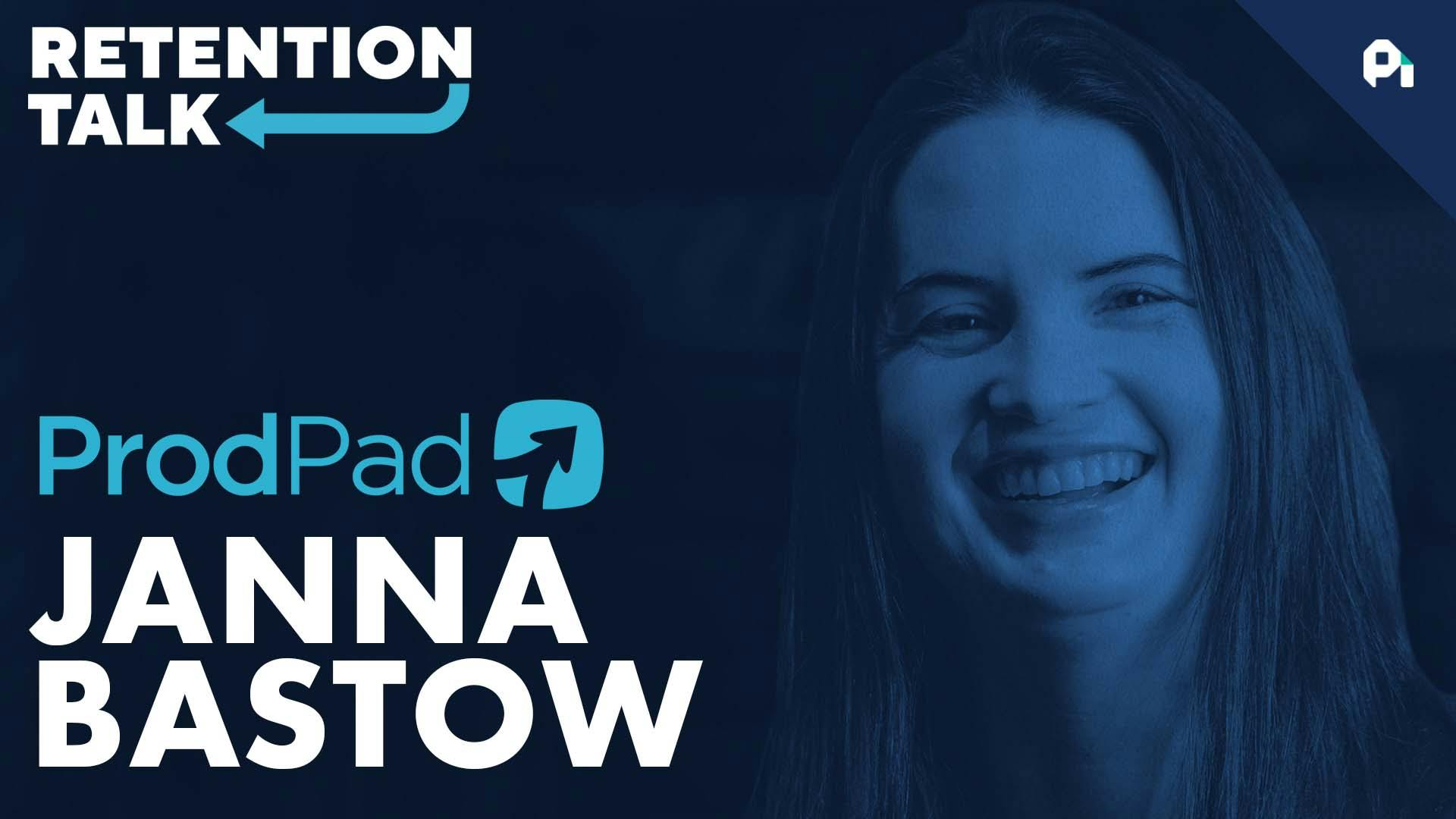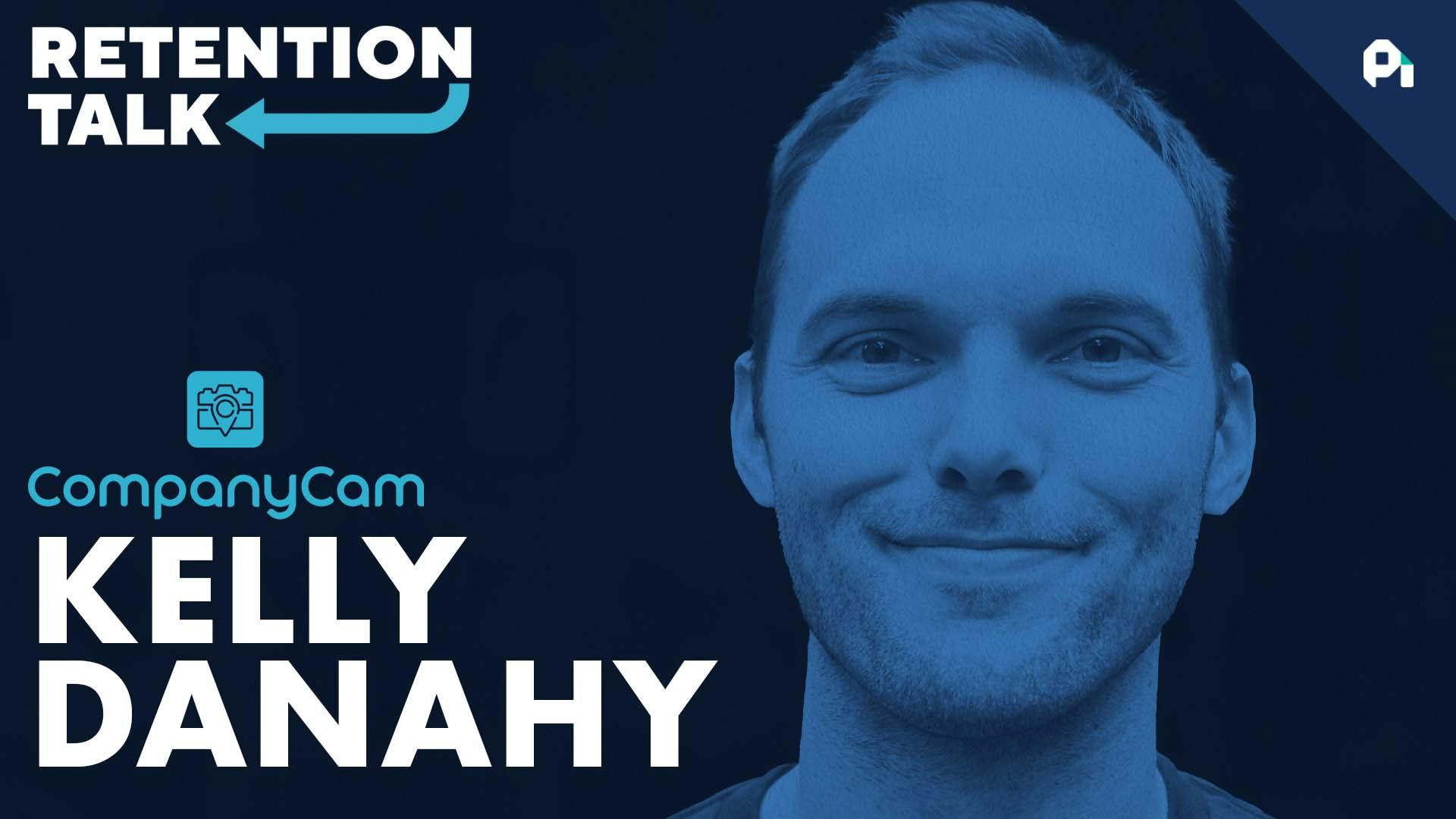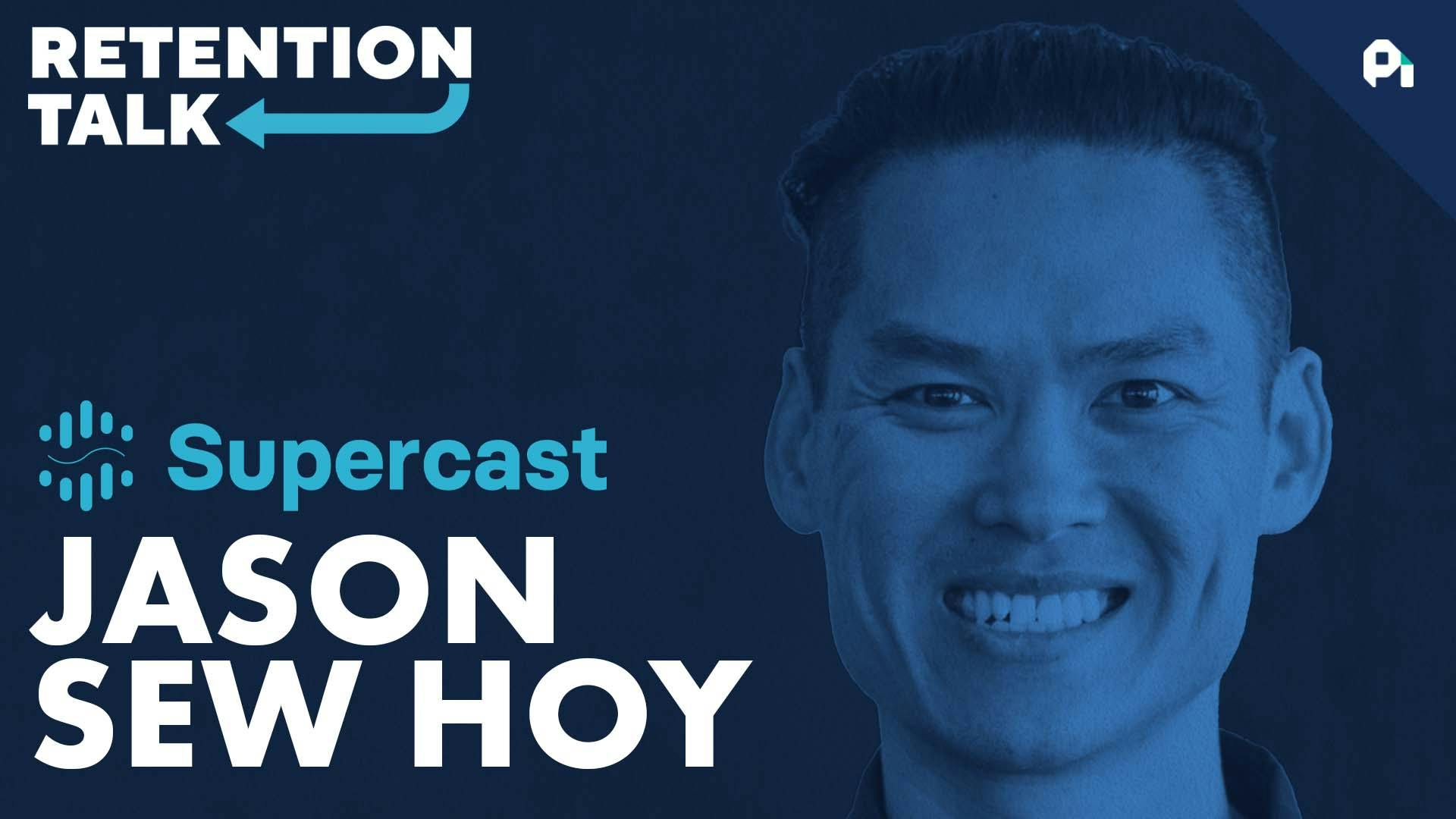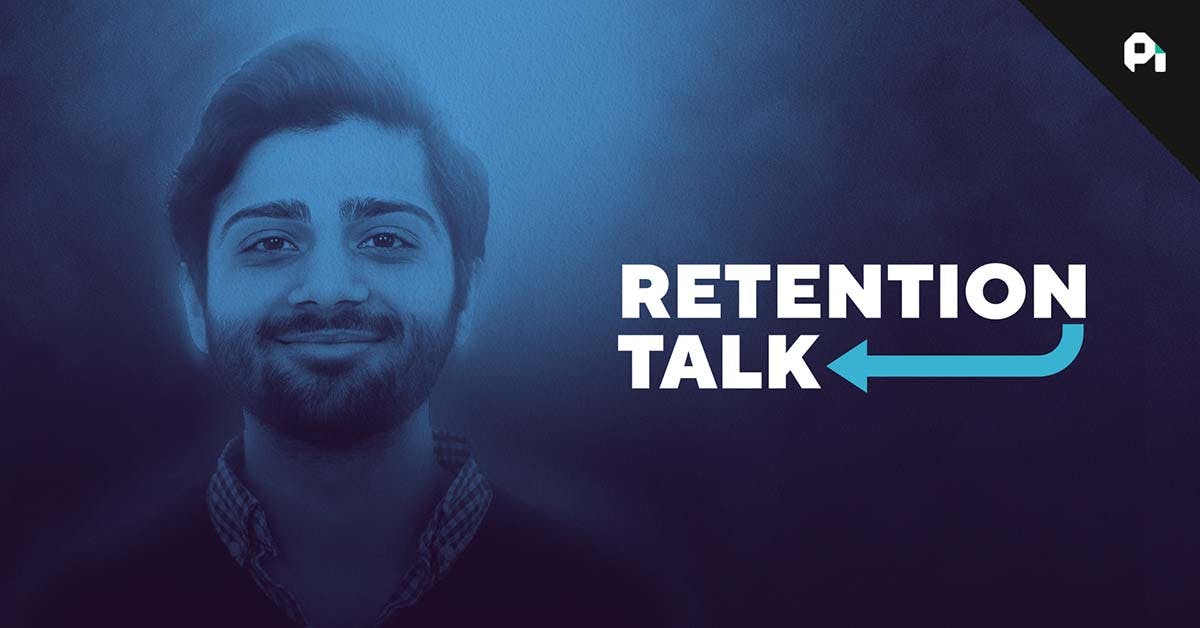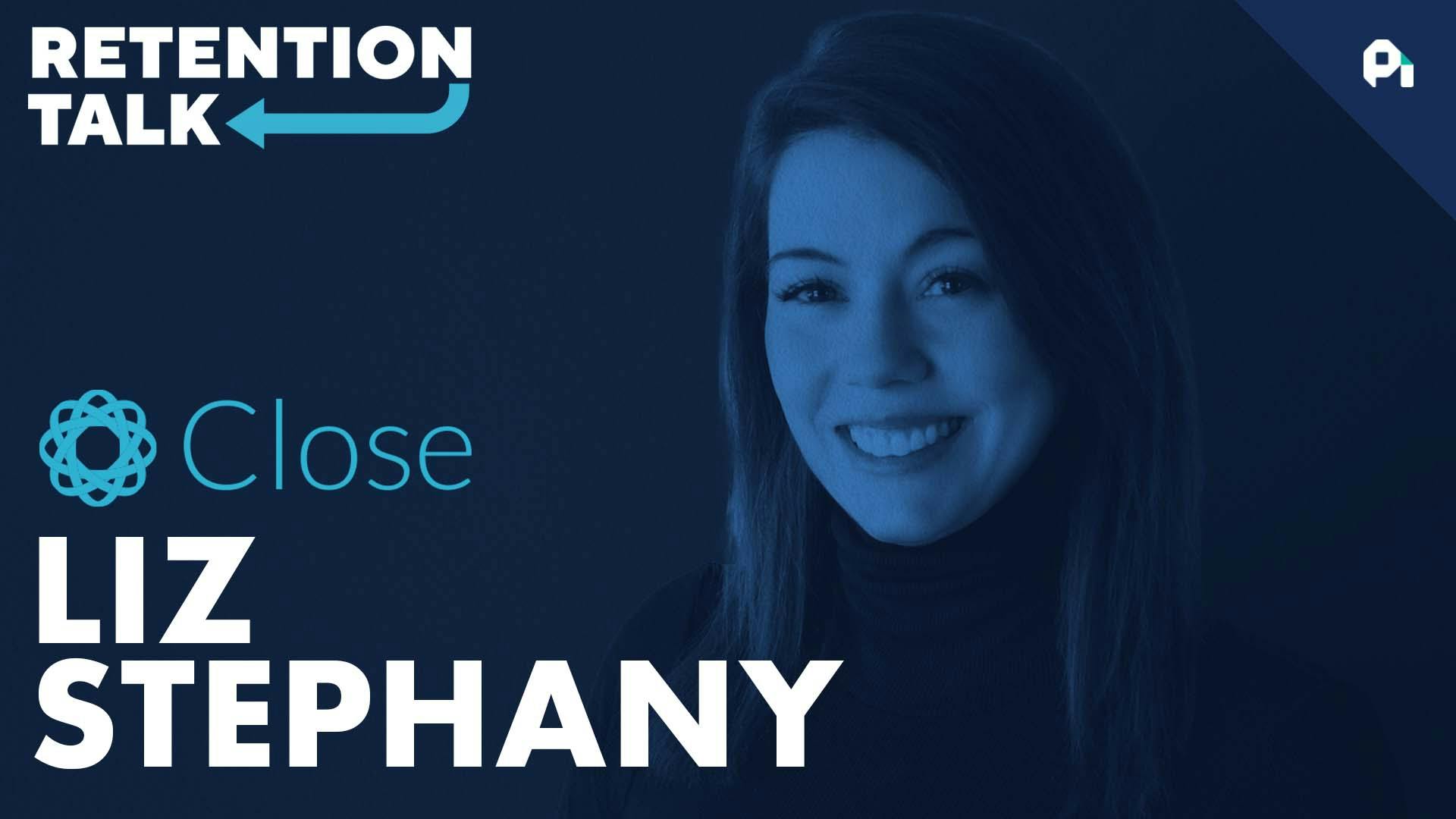
The customer isn't always right | Kelly Yanke Deltener
This episode might reference ProfitWell and ProfitWell Recur, which following the acquisition by Paddle is now Paddle Studios. Some information may be out of date.
Please message us at studios@paddle.com if you have any questions or comments!
On today's episode of Retention Talk, Neel speaks with Kelly Yanke Deltener, former Head of Product at CoSchedule. We talk about keeping churned customers in the company biome, figuring out what a successful customer looks like, and why the customer isn't always right
Key points discussed in the episode
It's on us in terms of retention to keep customers within the biome, but we don’t really cry over spilled milk when someone does go through the cancellation process.” - Kelly Yanke Deltener
Keeping churned customers in the company biome
During the cancellation process the team asks questions but is careful not to over do it. Customers can still keep their account and still get access to the free tools and white papers that are available. Kelly understands that a cancelled customer does not necessarily mean they are gone for good so they make it easy to return.
Figuring out what a successful customer looks like
It isn’t always an easy task but replicating success is tantamount to reducing churn. When you examine your app and look for movement patterns it can become clear where your efforts should be doubled and even tripled. Successful customers make churn an afterthought.
The customer isn’t always right
As Kelly says, the biggest mistake a product team or a company can make is allowing the customers to drive the bus when it comes to the roadmap. You have to reset yourself constantly and align to what the market fit is or the product fit is for the user that you're trying to solve the problems for. Low hanging fruit can be tempting but getting distracted by the things that there isn’t a market fit for can be deadly.
Do us a favor?
Part of the way we measure success is by seeing if our content is shareable. If you got value from this episode and write up, we'd appreciate a share on Twitter or LinkedIn.
00:00:00:01 - 00:00:27:06
Unknown
Not everyone is going to need the tools that we provide in the marketing calendar, right? Not everyone is going to be large enough a company to warrant upgrading to our marketing suite. They might find they still want to use our free headline studio tool. It's upon us in terms of retention to keep them within the bio. From that perspective, we consider that a success, but we don't really cry over spilled milk.
00:00:27:06 - 00:00:48:01
Unknown
When someone does go through the casting process, Welcome to Retention Talk. I'm Neal Desai, and we're talking to the best minds in the world of product and customer success to bring you actionable strategies on reducing churn and boosting retention. This week we're talking to Kelly, the former head of product at Coach Schedule. And this episode, we talk about how Kelly kept the churn customers in the company biome.
00:00:48:04 - 00:01:09:13
Unknown
They figured out what a successful customer looks like and pay close attention to what hell he has to say about the customer always being right Kelly, thank you so much for being here with us today. I am super excited to have you on the show to learn a little bit more about your journey and sort of what you guys are doing in the context of retention.
00:01:09:13 - 00:01:28:12
Unknown
So just to sort of give the audience some background, like how did you end up here? What would you what are you working on these days? And give us a sort of TLDR on on your path here? Yeah. So I think I wound up in my role with the company the way many people in software application development do.
00:01:28:14 - 00:01:56:06
Unknown
We find our needs as individuals or sometimes we find that we're generalists or we're good at planning or we're good at leading or ideation, and we just kind of naturally gravitate towards those roles as we mature in our respective companies or like the markets that we're working in or as we're maybe moving from one job to another. I've been doing software project management for a long time, and I really started to gravitate towards like managing people.
00:01:56:19 - 00:02:25:13
Unknown
And then while I was doing that, it's like the seasons in life. Like while I was doing that, I became really interested in having a greater role in the maker part of it, like how people are making things. So I was really fortunate to get offered a product management position here at code schedule and over time, as our product lines matured, as our company matured, we found that there was a really good intersection between my experience and the need for leadership in the department.
00:02:25:13 - 00:02:44:18
Unknown
So I've been in this head of product role for a couple of years now. I love that, and I love the point you made around like how we sort of stumble into different pieces right over over a long enough time horizon into sort of what we're good at and how we can add value. So that's great. And so obviously, you know, we still talk a little bit about how you guys think about retention.
00:02:45:02 - 00:03:07:06
Unknown
I'd love to get a sense of real quick, is there a team or person that ultimately owns revenue retention or customer retention? And if so, like how did that come to be? So we do have a team titled the Revenue Team, and that team is dedicated to customer support sales and that side of what retention would look like from that perspective.
00:03:07:18 - 00:03:47:03
Unknown
But in reality, with me working on product, how I look at retention how the product team looks at retention is we see it as a partnership with the revenue team, with marketing, with other product owners, within the business that may at different points in our users and future customers journey be a part of not only they're getting them to sign up for a trial, getting them to actually trial the product or signing up for one of our free products, but also what it takes to get them to convert and continue to provide them value throughout their journey with those.
00:03:47:04 - 00:04:09:13
Unknown
Right. If that's what retention is about, people stay. If you're solving their problem, you're providing them value and you're a good market fit for them. So product makes a lot of things right. We build things, we ship things, but we also watch a lot of these numbers and partner with these other departments on getting to that level of success.
00:04:09:19 - 00:04:31:05
Unknown
Got it. Yeah, because I think to your point, right, the customer experience is going to obviously be one of the biggest drivers in how a customer ultimately is able to get value and solve the problems that they came to you for regardless of the sales and support teams. Right. What's the make up of your customer base? Is is there a self-serve segment and then folks that have managers or what's that split?
00:04:31:05 - 00:04:56:12
Unknown
Look like? Yeah. So we have right now a few different product lines. Our code schedule, marketing calendar is probably what we're most known for and that is a self-serve product that the application is literally designed to allow individuals to organize all their content marketing in one place. Right. To get rid of the makeshift life like this is where they're planning lives.
00:04:56:12 - 00:05:25:14
Unknown
This is where their execution lives. Right? That is a self-serve product. Where people sign up and trial. And then there's a conversion process in there after two weeks. Right. So there's a lot of metrics that we just look at for just that product. We also have an enterprise, or you can call it a pro, and I'm doing air quotes in the podcast world right now where we have a more of a suite of products for companies that may require a little bit more hand-holding.
00:05:25:14 - 00:05:52:23
Unknown
Their marketing teams are slightly larger. That's a more guided demo onboarded product that we have that we do, like you mentioned, assign customer success management members who they have like these partners in success. So where we can help that and guide them along their journey because larger marketing teams may have more intricate or more steps to their workflow, they may have things like sign ups or things like that.
00:05:52:23 - 00:06:15:15
Unknown
So we're we're always very invested not just within the application, but with our success management team of making sure that those people feel like they've got a partner with us and that we're helping them be successful with marketing. We also just released the headline studio at the end of last year, and that is our newest product that's on the market.
00:06:15:15 - 00:06:34:05
Unknown
And it's quite literally a free product. It's free sign up, free for life where individuals can go in and be like, Hey, look, I'm trying to figure out whether or not I'm doing a good job of writing a headline for this blog post. I'm doing well. You throw it at our application there and we give you data on it.
00:06:34:05 - 00:06:59:13
Unknown
Like, Yeah, you should maybe change an emotional word, or you should consider using a less used word. Or getting more detailed. We also now we have just added an SEO component to that. So we're really proud of that tool. And of course, and the way we provide further value is allowing people access to the pro features with that for a limited time and then allowing them to keep the free version.
00:06:59:18 - 00:07:31:11
Unknown
So it's really kind of interesting, right? I know I'm rambling a lot about this, but we have three very distinct product lines that converge very differently and have retention concerns and our approaches that can be wildly different per application that we're talking about. It's interesting, we're constantly learning we're constantly testing out things in each of these different product lines to break our assumptions on what works and what not working in the other and vice versa.
00:07:31:16 - 00:07:51:11
Unknown
Got it. That makes total sense. We like to think about, you know, retention in a couple of different buckets, right? One of which is these like strategic larger sort of issues or challenges that your customers might have. And then there's these mechanical pieces right around getting folks in the right term length. You know, what your counsel process looks like and things of that nature.
00:07:51:12 - 00:08:11:22
Unknown
So I'm curious, you know, you said you guys have a pretty good relationship and CSS and product is obviously working in lockstep. If someone ultimately does want to cancel, it could be, you know, the self-serve product, the scheduling one or what have you like what happens, right? How does a team react to that? And walk me through like ultimately how the team responds to something like a cancelation.
00:08:12:01 - 00:08:42:09
Unknown
It's interesting, right, because of the different product lines. But I'm just going to take our self-serve marketing calendar product right now. To talk about. And because that's totally self-serve, the cancelation process is self-serve, too. So during that process, we ask questions, will will ask them like, hey, can you tell us why you want to leave? Can you tell us if you're looking at using a different product to solve some of the problems that we were solving?
00:08:42:19 - 00:09:01:18
Unknown
We don't overdo it with the questions because that can be a whole other friction point that you add during a cancelation process. There is a sweet spot for that, right? We honor their request, right. We say like, look, we get it. We didn't quite make the grade with you or we weren't quite the market fit or the product fit for you.
00:09:02:08 - 00:09:24:03
Unknown
Thank you for your feedback on this. We'll keep your account here for you. Walk down of course, for X number of days, I think to make sure we're following federal and European standards. You know, we don't hold on to data any longer than we absolutely have to, but we'll say like, you know, come on back if you need to, you can restart your account after that time period.
00:09:24:03 - 00:09:45:06
Unknown
You know, it's a different situation where they have to sign up for the trial again. But during this time, too, we also send them email journeys where we just say, you know, thank you for your time with us. You still have free access to all of our blogs, any of the white papers you've downloaded, any of the free tools that you may use, we still want you to be successful.
00:09:45:19 - 00:10:10:08
Unknown
I think that might be one of the bigger things we've been learning over the past couple years is that not everyone is going to need the tools that we provide in the marketing calendar. Right. Not everyone is going to be large enough a company to warrant upgrading to our marketing suite. They might find they still want to use our free headline studio tool.
00:10:10:08 - 00:10:38:15
Unknown
It's upon us in terms of retention to keep them within the bio. From that perspective, we consider that a success, but we don't really cry over spilled milk. When someone does go through the cancel process, we just try to learn from what may or may not have happened during onboarding. That didn't go well for them during our communication with our communication journeys with them, etc. We just examine some of those things To your point on that, finding that sweet spot is funny.
00:10:38:15 - 00:11:02:22
Unknown
I feel like in recent years the industry has shifted to reducing the friction to cancel because no one wants to be that customer that needs to jump through hoops and mail and letters and call people that cancel their subscription. But at the same time, I think those product people that want to learn why. Right. Has there been anything that you can think of an insider or learning that you've had from the user base that has directly informed product development or a feature or something that you guys have changed?
00:11:03:01 - 00:11:28:00
Unknown
Oh, absolutely. From a tactical standpoint of how we review churn surveys or how we execute on any of the information in those, we've learned not to be over reactionary right. I think the biggest mistake a product team or any company that works in software can make is allowing the customers to drive the bus when it comes to their roadmap.
00:11:28:00 - 00:11:51:05
Unknown
Right. And so you have to guard yourself against trying to fix every little thing that comes over in a churn survey. You have to reset yourself constantly and align to what the market fit is or the product fit is for the user that you're trying to sell the problems for. Right. But that being said, there are nuggets in there that absolutely help us, right?
00:11:51:05 - 00:12:20:15
Unknown
So if during a churn survey, someone says well, I could never get this to do something the way I wanted it to. Whoa, really? Boy, we should sit down and read that and we should have a double check and make sure there's not something weird happening in the app. Hey, we should also have our UI, UX designers look at that too, from an onboarding and usage standpoint to see if some way we put in blockers to accessibility or to just onboarding that piece of the application.
00:12:20:15 - 00:12:42:19
Unknown
Right. There's sometimes like interesting low hanging fruit intern surveys, but at the same time, like, I absolutely caution people to not get distracted by the things in there that isn't a market fit for you. I think you have to have sort of a long term view on that where it's like, okay, you know, digest the information and see how that ultimately coincides with the roadmap.
00:12:42:19 - 00:13:22:14
Unknown
But totally that makes total sense. What's something you guys may have struggled with that perhaps you've been able to turn around with the last six or 12 months? I wouldn't say in the six to 12 months we've struggled with it. I think it's when we've started to solve the problem, but when we doubled down on developing strong use cases for what successful customers look like and how they use our application and how we want them to use our application and you know, it's kind of old fashioned in a sense of building out really strong personas, how those customers behave and the decision making that they do on a daily, weekly, monthly basis when it comes to
00:13:22:14 - 00:13:49:15
Unknown
their marketing planning and their content planning. And that has driven not just decisions on like things you're talking about like small changes that we can make in the application, changes to onboarding that, but it's also driven our roadmap, right? That's the goal. That's how you want a rematch of and you want you want to understand your market, you want to understand your user base, you want to know what success looks like longterm.
00:13:49:19 - 00:14:32:23
Unknown
So then things like retention, the conversation around retention start to become less about, oh my gosh, how do we how do we keep these customers from canceling, looking at churn surveys and reacting to those and the conversation moves towards leading ways. You can solve issues within the application rate. If you have an app and you have a certain area of the application, you know that when people use it and they use it either daily or monthly or weekly or whatever, that metric looks like and you kind of watch that metrics and you start to correlate the use in that certain area to successful and retained customers, well, then you just double down on that.
00:14:33:04 - 00:15:00:02
Unknown
You just make it really easy for people to start using it, onboarding to IT, resources surrounding it, just taking down any barrier to increase in that usage that you can. That's a little bit more. Instead of reaction to churn, it's more results driven and focused on success for the customer. Awesome. Well, I know, I know we have a few minutes left here, Kelly, but but what's something you're really proud of as you think back on your time there?
00:15:00:02 - 00:15:19:07
Unknown
You know, it could be in the context of retention or otherwise. But, you know, I'm sure I'm sure there's been at least from my experience in product, it's always a rollercoaster, but ultimately really fulfilling. But but as you look back when something you're really proud of having having done, it would be really easy for me to point to like these products themselves are individual features, to be really honest with you.
00:15:19:07 - 00:16:12:10
Unknown
So I'm so happy and proud of where just our internal teams continue to cross, collaborate and push that side of our business. To be more collaborative. I think product would be very easy for a product team to have a roadmap handed to them and just execute on that right. The hard work comes in when the team is expected and empowered to connect with customer feedback channels more regularly, to talk to the people that are on our customer success team, to objectively be answering the question of what a successful customer looks like and partnering with what the revenue team and the marketing team sees that being and and then discussing where the intersects don't happen, right?
00:16:12:10 - 00:16:44:05
Unknown
Where things fall outside of that, where opinions may differ. I think when you take simple things like an NPS score, right? And getting feedback through there and making it more while product absolutely owns that. But creating access and sharing feedback across all of the pillars of what the business is, I think those are the things that I'm really proud of and I think I can only take a small part of the victory in making that happen because I'm only one person that makes a ton of sense.
00:16:44:05 - 00:17:01:22
Unknown
I think from talking to a lot of folks recently, it's evident that product and then I think especially since the sales are often very disjointed. And I think to your point, like the more you can inspire collaboration because ultimately the goal in the metrics and the same right among them, like hopefully you know that that trickles down and leads to good things.
00:17:01:22 - 00:17:21:21
Unknown
So awesome. Kelly. Well, if they want to learn more about you guys, how can they find you to learn more. Sure. Well coach schedule dot com that's the awesome company I work for that's killin every day. Sign up for trial. Check us out. We'd love to. I'm on Twitter at PM, Bidness PM and ESPN and of course I'm on LinkedIn.
00:17:22:08 - 00:17:53:04
Unknown
Those are the best ways to get a hold of me tweeting at me or connecting with me on LinkedIn. I also have over the last year during COVID to keep energy and our community going. I'm located in Fargo, North Dakota, Coast Schedules Head Corporate offices in Bismarck, Dakota. So we're like in the middle upper Midwest area where we're a little isolated in a small area, but we started a full stack suffer engineering group and I can always be found monthly at that too.
00:17:53:04 - 00:18:07:08
Unknown
So if people haven't joined a local full stack group and that's something you're passionate about, I absolutely recommend doing it and I absolutely recommend starting money if none exists in your community. Thanks so much for being here. Really appreciate the time. Thank you.
00:18:12:06 - 00:18:35:02
Unknown
A huge thank you to Kelly for lending their time to the podcast today. With their help, we've developed a deeper perspective on how coach schedule drove retention. To recap, we talked about keeping churn customers in the company biome. Well, what does this mean during the cancelation process? The team asks questions, but is careful not to overdo it? Customers can still keep their account and still get access to the free tools and white papers that are available.
00:18:35:06 - 00:18:56:20
Unknown
Kelly understands that a canceled customer does not necessarily mean they're gone. For good. They make it easy to return. Second, figuring out what a successful customer actually looks like isn't always an easy task, but replicating success is tantamount to reducing churn. When you examine your app and look for movement patterns, it can become really clear where your efforts should be doubled and even tripled.
00:18:57:02 - 00:19:18:01
Unknown
Successful customers make churn an afterthought. And lastly, the customer may not always be right. As Kelly says, the biggest mistake a product team or a company can make is allowing customers to drive the bus when it comes to your roadmap. You have to reset yourself constantly and really align to what the market fit is or what the product fit is for the user that you're trying to solve.
00:19:18:01 - 00:19:33:12
Unknown
The problems for low hanging fruit can really be tempting, but getting distracted by the things that there isn't a market fit for, it can be deadly. Thanks for listening to this week's episode of Retention Talk. Don't forget to subscribe at Retention Talk RT.com. And if you want to help spread the word. Tag me on Twitter and Neil decide.
00:19:33:12 - 00:19:49:21
Unknown
23 and let's dish on today's episode. Please give us a five star review on the podcast platform of your choice and let your friends know as well. And if you know a great guest, send me a message and know a proper welcome. This has been a proper record production, the largest, fastest growing media network dedicated to the world of subscriptions
